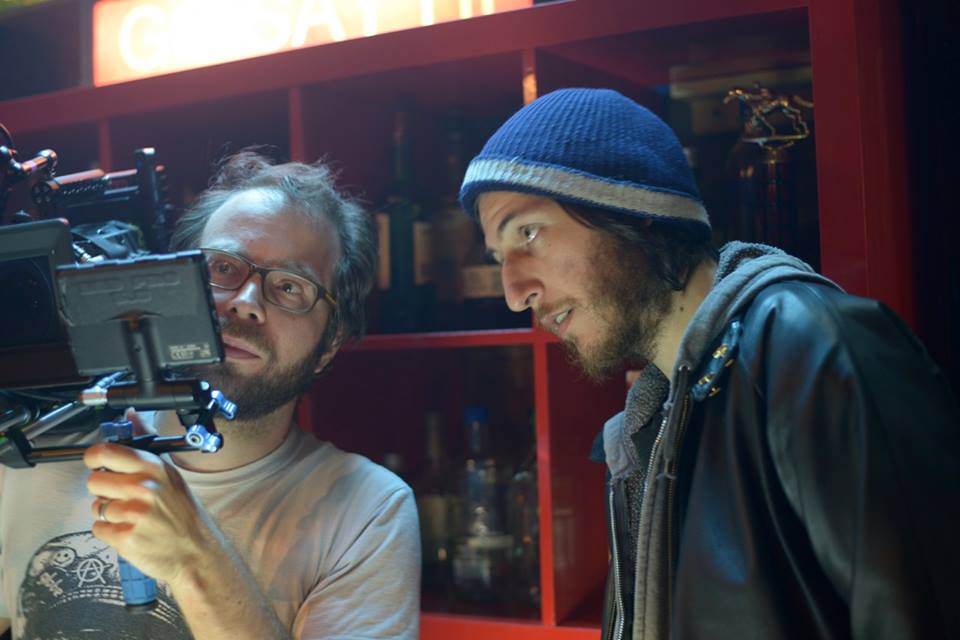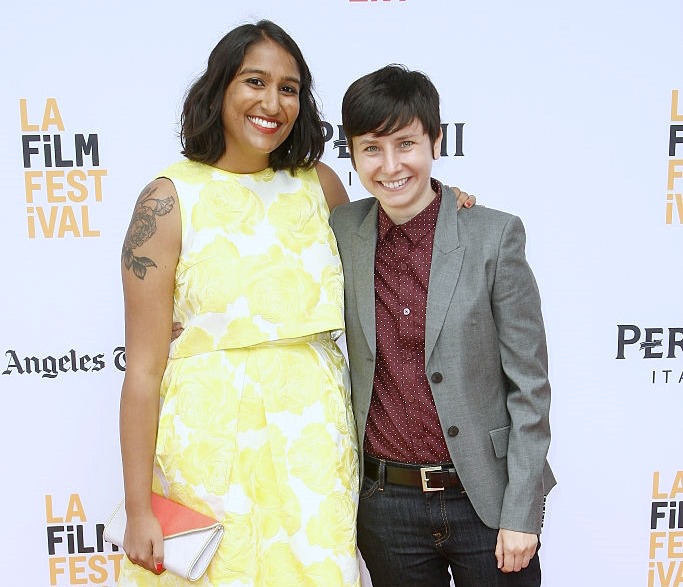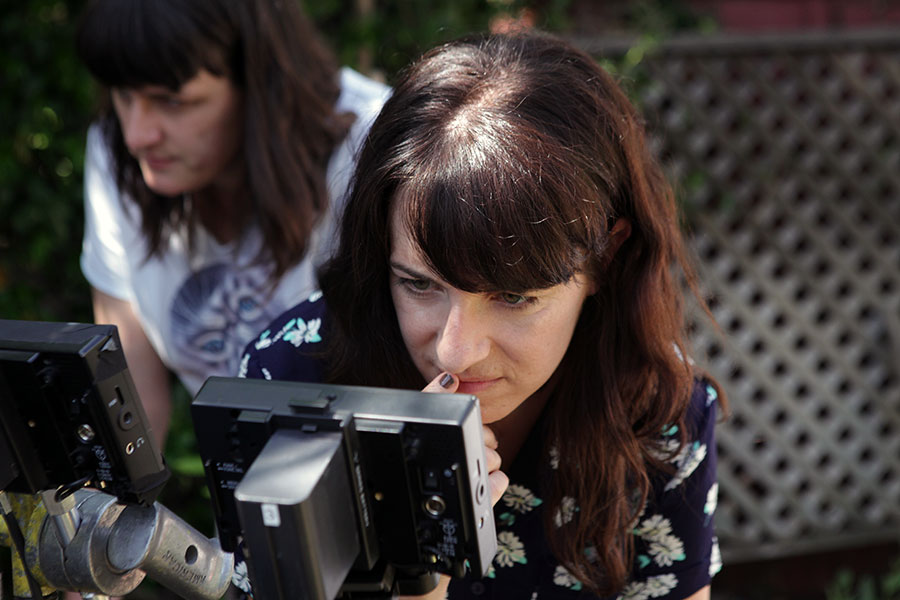On the heels of completing an experimental indie film in 2011, writer/director BEN CRESCIMAN received some news: He’d been accepted to the University of Southern California’s Screenwriting M.F.A. program. At USC he worked with advisors such as David Lynch’s longtime producer Mary Sweeney, emerging with his master’s and a stack of screenplays, one of which he decided to direct as his next feature. That feature, a Los Angeles-set psychological horror/thriller titled SUN CHOKE, premiered at the Stanley Film Festival (held in the Colorado hotel that inspired Stephen King’s The Shining) and is now available in select theaters and on iTunes/VOD, courtesy of XLrator Media.
Sun Choke chronicles the housebound rehabilitation of Sarah Hagan‘s Janie by her caretaker (Barbara Crampton) in the wake of Janie’s psychotic breakdown. Sara Malakul Lane co-stars as a stranger who enters Janie’s life, bringing her psychological demons further and further to the surface.
We had a chance to talk to Ben Cresciman about the casting process of his new film, location scouting for the perfect mansion, and how as a Los Angeles native he decides to interpret his hometown on-film.
——
COLIN McCORMACK: A lot of the film really rides on the Janie character’s shoulders, and I heard you auditioned 1,000 actresses for that role?
BEN CRESCIMAN: Well we auditioned close to 1,000 for the three roles combined. But it was definitely an extensive and exhaustive casting process, for sure.
CM: For the Janie role, what was the most difficult thing about finding the right person? And what about Sarah Hagan brought home that she was the perfect one?
BC: With these things a lot of it you have to chalk up to as something kind of ineffable when you get right down to it. Sarah came in and I obviously knew her from Freaks and Geeks, which is such an amazing show, and a lot of people know her from Buffy [the Vampire Slayer] and it was sort of mind-boggling to see this person come in. You have these kind of preconceptions– I was half star-struck, I dunno. And she comes in and then all of a sudden you’re looking at this totally different person. As you said, we auditioned a lot of actresses and a lot of really talented actresses, and ultimately with Sarah, she brought a real interior life to the character. This is not a character with a ton of dialogue, so a lot of the performance is going to rest in her eyes and her muscles and her posture. And she understood that kind of intuitively. Beyond that, I think she understood the character in a way that was hard to refute. At a certain point we were looking at ourselves – me and the producers – and it was just like, Obviously it’s Sarah, there’s no other choice. And she gives an incredible performance. I can only hope– I mean, I hope that Sarah can be in every movie, but it really showcases her dedication to the craft and her phenomenal and innate abilities to transform herself. Just as a film fan it’s a really remarkable thing to watch.
CM: And I think it’s interesting for people watching the movie who did watch Freaks and Geeks, that preconceived notion of her being used to the film’s advantage. Where at first you sort of think of her as this meek, innocent character [like her Freaks and Geeks character Millie] who maybe isn’t actually a harm to herself and others, and then when that change happens it’s all the more surprising.
BC: Absolutely, that’s definitely a big key to the performances, being able to disarm people into thinking that she’s helpless. As you said, that’s a real key to the punch that comes later when you realize maybe she isn’t so helpless.
CM: Is it hard to keep fresh eyes and a clear vision when you’re fielding through so many actresses auditioning?
BC: Yes and no. This is the first time I had gone through a casting experience like this. So just the sort of minute-to-minute of that was exhausting. But I think you know when you see someone with talent – even if that person isn’t the person who’s going to get the role – it’s hard to ignore when somebody comes in and really grasps the material and the scene and takes you somewhere. So certainly you go through stretches where it doesn’t feel like it’s working, you’re not getting what you want, and then somebody comes in – again, even if they don’t end up in your film – that moment, those few minutes in casting kind of reinvigorates you like, Okay, we’re going to get there. I think that’s the important thing to hold onto.
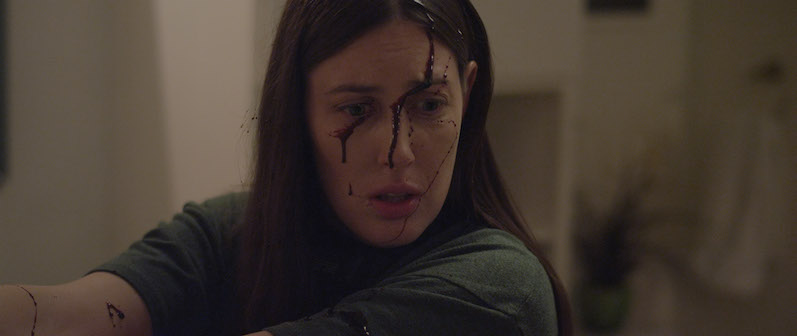
CM: When it comes to Barbara Crampton’s casting, with her being somewhat of a legend in the genre [Re-Animator, From Beyond, Chopping Mall, Puppetmaster], was there any thought to the cool hook that might bring to the film? Especially since low-budget films don’t always generate buzz online for casting, but when you’re casting a staple from the genre in a new role it can make the rounds on [fan] sites.
BC: For sure. It was exciting for me to see Barbara doing something so wildly different from stuff she’s done in her amazing career working in the horror genre. And I think for her it was a really interesting challenge; it was a new experience that she knew she could tackle. And because it’s exciting for people to hear [about her casting] like, We like Barbara Crampton from Re-Animator or From Beyond. Or even more recently from You’re Next, ‘cause that film had come out sort of in that [casting] period and she had reemerged in a way and gone on this crazy, amazing resurgence of being in cool new films and giving great performances. Having sort of that genre icon in your film it definitely gets peoples’ attention for sure, and I’m glad for every eye she’s been able to bring to the film.
CM: So you auditioned a lot of actresses. How many houses did you scout for the main location?
BC: Ohhh houses [laughs]. A lot of the work you do scouting houses now is on these vacation rental websites like VRBO and things. I mean, I can’t even begin to imagine the number of houses I looked at [online]. I think we only ended up touring three or four. There was even another one after the house that we chose. But as soon as I walked into that place – it wasn’t what I’d imagined, it wasn’t what I had written for the script – but as soon as we walked in there was no question. You go through the front door and down these stairs and you’re essentially in this kind of big multi-million-dollar mansion-y prison where you can’t see the outside world, the outside world can’t see you, and it’s very isolating. And it just contained all the DNA for the location that we needed even though it wasn’t what I’d had in my head.
CM: Was there a lot of art direction done to the house? Because of how sparsely it’s decorated and the white walls and furniture, it really gave an asylum type of feel. Was it like that before, or did you guys dress it that way?
BC: We definitely dressed it that way. We used some of the furniture that was there, but ultimately this house for us was as much a medical facility as it was a home. There was a section of the house that for production purposes we nicknamed the Triage Area, ‘cause it just had that look to it. From the beginning that was the case but especially once we were in the house, anywhere you are you can be seen from anywhere else. There’s no place to hide. That creates some tricky camera issues, but also some really interesting character and narrative issues where you’ve got a character in Janie who really can never be out of the sight of her caretaker.
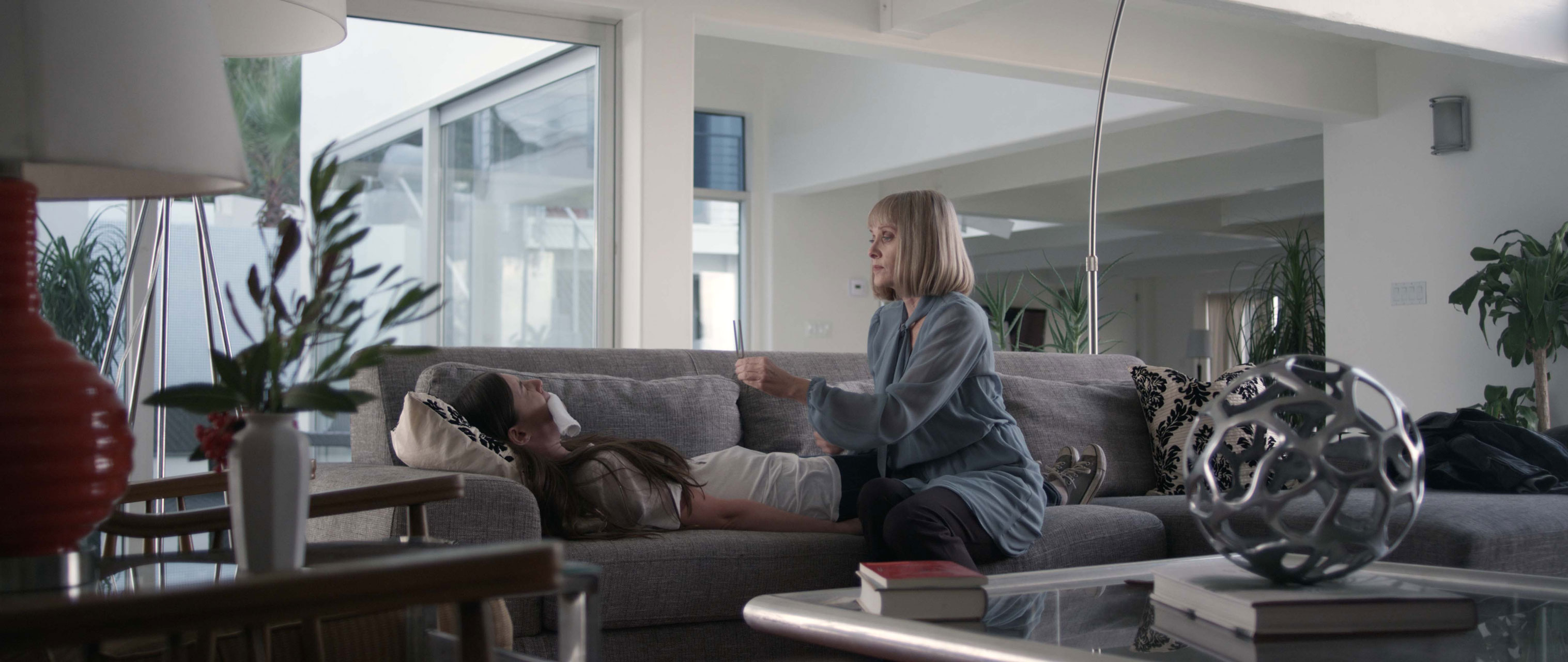
CM: Setting a horror film in so much sunlight was really interesting. Were there any other films you could draw from in that kind of sub-genre? I had a hard time thinking of other films that are so bright visually with such dark subject matter.
BC: Not specifically. I remember Upstream Color had come out that year, not a horror film but certainly a really beautiful color palette and really kind of surreal, dreamy visual style. That really resonated with where I was coming from. But as far as films in the genre? No, there’s not anything I can think of immediately in that same vein, though I’m sure there must be [others].
CM: As an LA native, do you think you shoot the city differently than somebody who maybe didn’t grow up here?
BC: Eh, I don’t know. It’s sort of hard to say, I guess. I know that whatever my version of what the city is is going to be my version. I think the film is very much an LA film, but not in the way where we ever see anything iconic of the city. There’s no palm trees or traffic jams [laughs] or Hollywood sign or anything like that. Because for me, what I think LA is about and always has been about is the vibe of the city. There’s something about this kind of sun-bleached [world]; it’s beautiful and it’s got the smog and there’s so many components to the visual makeup of the city and there’s so many different visual zones. You can be in the mountains, you can be at the beach, you can be in the city. The house that we were in was at the top of Coldwater in Beverly Hills and it was very woodsy, even though you’re five minutes up from the rest of the city. So that’s always really interesting to me for sure. One film that did influence the color palette, though was not at all in the genre, was The Long Goodbye. Again that sort of sun-bleached Los Angeles that you don’t have to be here to know and identify, but if you are from here and you see it it’s something that resonates in a really personal way.
CM: Going back to when you were coming out of USC’s screenwriting MFA program, I’d read you became somewhat disillusioned going on the water bottle tour of LA and taking meetings. At what point did you decide to make your own film as opposed to keep grinding and meeting people in hopes of getting hired to write someone else’s film?
BC: You know, it goes back to when I made a feature film in 2011 [Negative Space] that was very small, Kickstarter-funded; we did the Mike Leigh method, not quite improvisational but we improvised our way through the story and the scenes. And so in making that film I kind of said, Okay I’m at a point in my life where I keep saying I’m a filmmaker, so it’s time for me to make a film. It was time to do that. And I knew that the best way to advocate for yourself as a writer is to be willing to take the plunge and direct something. So having that smaller experience to cut my teeth on and get acquainted with the process, it made it such that when I came out of the MFA program and as you said I was going on these meetings and every time you get excited, Oh wow, the possibilities! And what I realized in the end was it’s the same as it was before. I have to be my number one advocate and I have to say to myself and to everybody else, I’m going to make this film no matter what. I have access to cameras, I have access to people, I have access to locations, I’ll figure it out. And I think that kind of spirit can be infectious. So that was a big help for me in making that leap over trying to navigate the system to being able to circumvent it in my own small way and just go off and make this film.
__
Thanks to Ben for talking to us about SUN CHOKE. To learn more, follow the film on Twitter, Facebook, or Instagram.
If you’re an independent filmmaker or know of an independent film-related topic we should write about, email blogadmin@sagindie.org for consideration.

